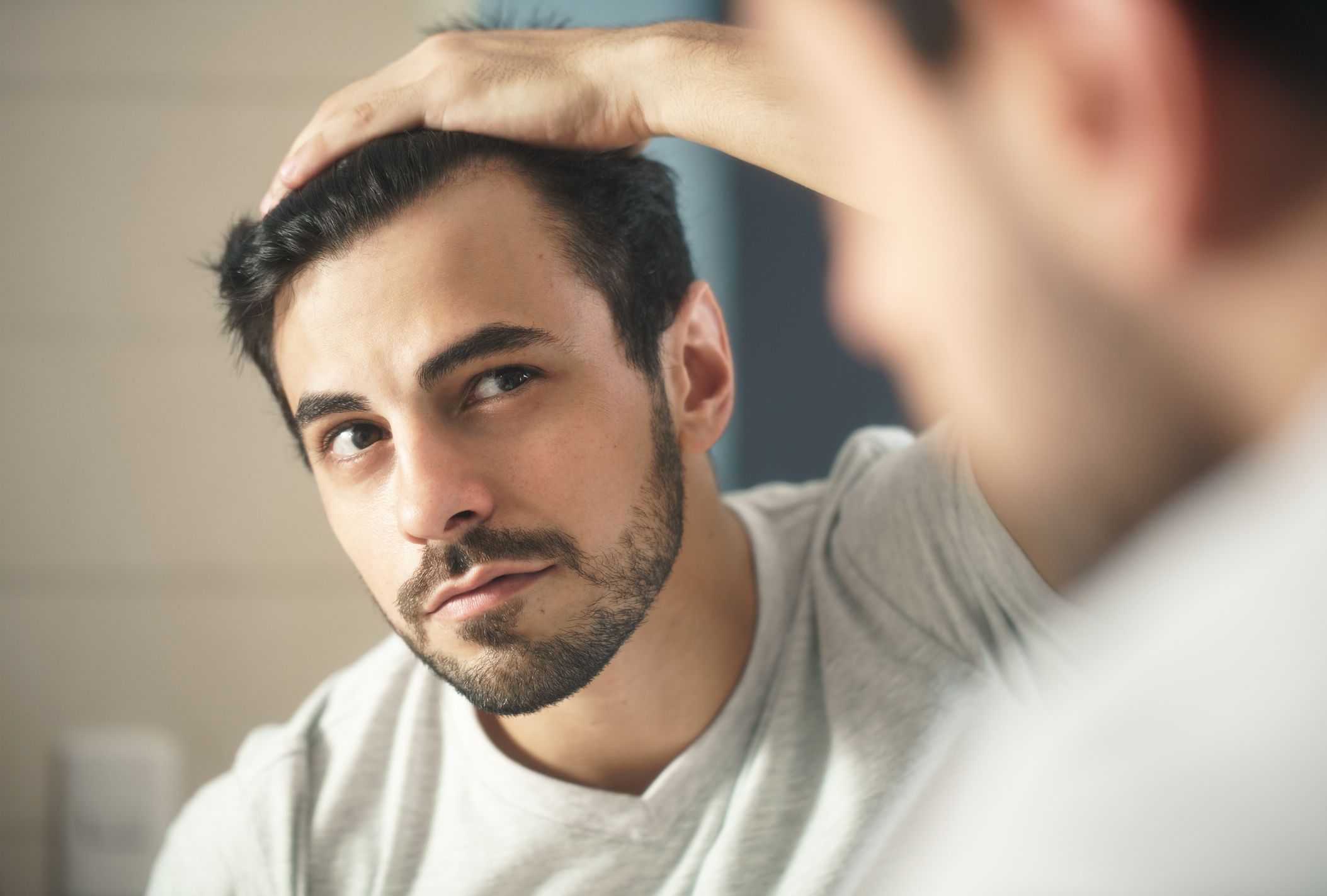Approximately two-thirds of the UK population suffer from male pattern baldness. It’s for this reason that Finasteride is widely used, as it’s one of two clinically-proven medications to treat hair loss in men. The other is Minoxidil – but is it also successful at treating male pattern baldness? Let’s find out.

Minoxidil introduced
Consisting in various forms, Minoxidil is a hair loss treatment that has been clinically proven to be effective. It can be used as a spray or lotion, depending on a person’s choice when they turn to Minoxidil as a solution. For instance, Sons’ 5% Topical Solution is a vasodilator, meaning it dilates the blood vessels in your scalp when it’s applied. This increases blood flow to the area, which helps to revitalise the hair follicles on your scalp. Ultimately, it supports Finasteride and the two work best in tandem.
How should Minoxidil be used?
Coming in a 60ml bottle, Minoxidil is really easy to apply. You just need to massage 1ml of Minoxidil into the affected area of your scalp, which is typically the temple or crown. It’s best to incorporate its application into your daily routine – once in the morning and once at night. You will also need to ensure you apply Minoxidil to a dry scalp, as this provides it with the best chance of success.
Is Minoxidil effective?
Multiple studies have found that Minoxidil is effective at treating male pattern baldness. The most effective type of the medication is a 5% topical solution that is tasked with regrowing hair around the scalp. While everyone is different, the majority of men that turn to Minoxidil as a hair loss treatment enjoy success, particularly when it’s paired with Finasteride.
How to ensure Minoxidil is effective
While it’s impossible to say that Minoxidil works all of the time, there are some things you can do to boost your results. The key thing to remember is that you need to take Minoxidil consistently for it to be effective. Missing or skipping days will limit its efficacy. You also need to apply Minoxidil to the required areas of your scalp, as it works to stimulate hair growth in specific areas. Because it can be difficult to see your crown in the mirror, it’s helpful to take photos to track your progress.
As we’ve already mentioned, combining Minoxidil with Finasteride can increase its efficacy. This is because Finasteride impacts the ability of DHT to bind to your hair follicles, while Minoxidil increases blood supply to the affected area. When used in tandem, the results can be impressive, so it’s worth using both if you’re hoping to treat male pattern baldness.
The bottom line is that Minoxidil is an effective hair loss treatment, but it doesn’t necessarily work 100% of the time. Follow the above tips to give the treatment the best possible chance of success and set about treating your hair loss symptoms today.
Leave a Reply